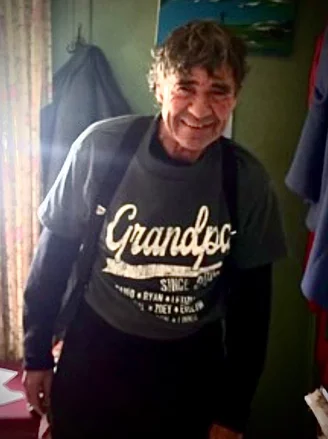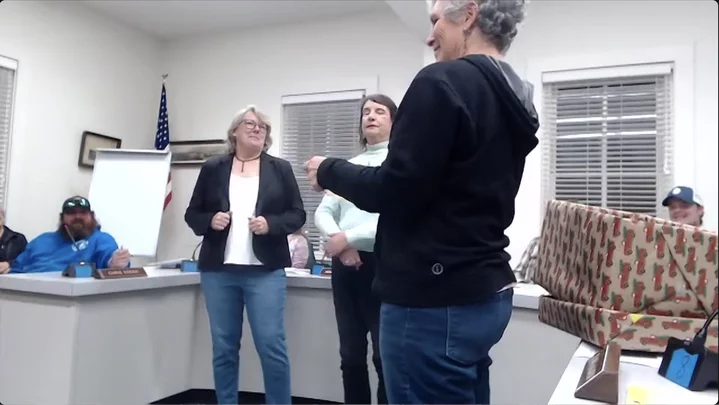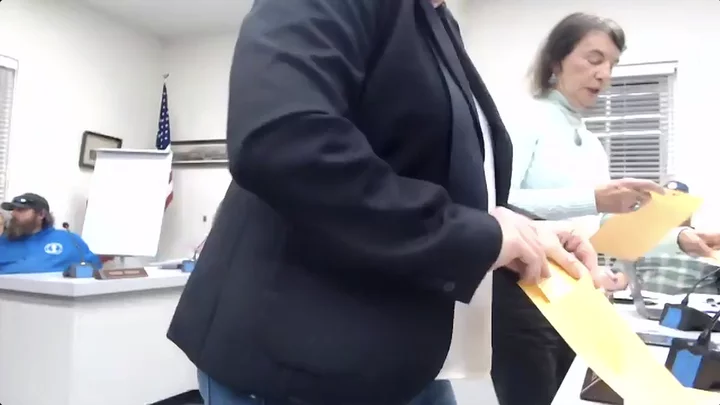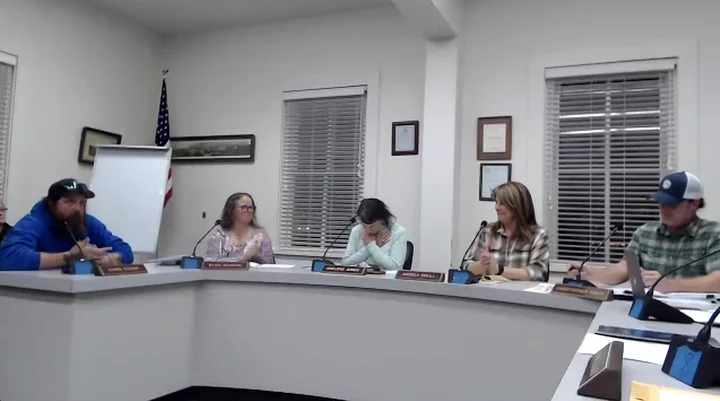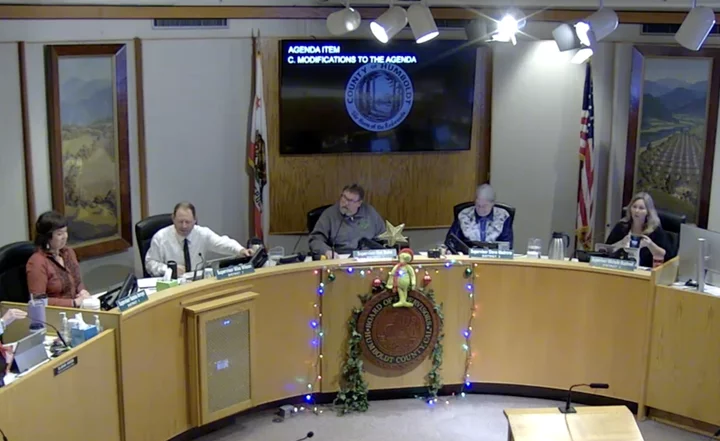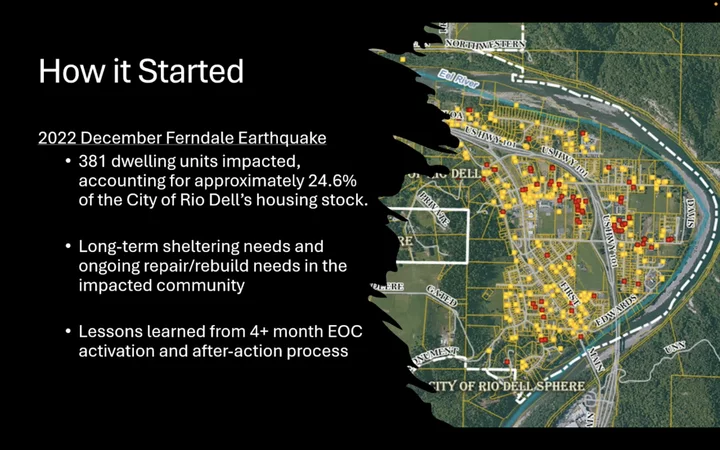California Judges Say They’re Underpaid, and Their New Lawsuit Could Cost Taxpayers Millions
Adam Ashton / Wednesday, Dec. 11, 2024 @ 7:25 a.m. / Sacramento
A new lawsuit alleges the state illegally miscalculated raises for California judges over the past eight years. Here, a courtroom at the San Diego County Superior Court awaits a judge on Oct. 9, 2023. Photo by Adriana Heldiz, CalMatters
California judges make a good living. They earn at least $240,000 and can count on a raise just about every year, a requirement that’s written into state law.
So why do they feel shortchanged by the state?
A coalition of them argues the state has been stiffing them for years by mishandling the formula it uses to calculate their wage increases. In a new lawsuit, one such judge is demanding that the state redo the math going back almost a decade to include information that likely would have resulted in bigger raises.
“There’s a reason why our latest pay increases have been so puny and falling far short of the rate of inflation. The state didn’t tinker with the statutory formula, but it seems to have played with the inputs,” said a statement announcing the lawsuit by a group called the Alliance of California Judges.
A lot of money is on the line. An appeals court justice filed a similar lawsuit a decade ago, and the state had to cough up $40 million after losing the case.
The formula at the heart of the lawsuit sounds simple. State law requires that judges receive annual raises based on the “average percentage salary increase” given to other California state employees. This year, judges received a 2.6% wage increase, down from 3.2% in the previous year.
But the state has fouled up the math before. The earlier case filed by a retired appeals court justice, Robert Mallano, turned on a mistake the state made during the Great Recession when it had withheld judges’ raises even though certain civil servants had received small pay increases. The state, ordered to recalculate judges’ wages, handed them $15,000 checks for missed pay.
This time, the complaint by Sacramento Superior Court Judge Maryanne Gilliard draws attention to one way Govs. Jerry Brown and Gavin Newsom raised pay for public employees without giving them substantial general salary increases. It alleges the state illegally shorted the judges by not counting some of the pay-raising perks that went into recent contracts.
Both governors signed contracts that included general salary increases of up to 4% that benefited all workers represented by a given union, plus more generous targeted raises for specific groups of employees.
The judges allege the state has been counting only the general salary increases in the formula it uses to set judicial raises — while excluding the more targeted salary adjustments.
“Defendant CalHR has intentionally modified the inputs to the calculation such that active judges and justices are paid less than the salaries to which they are entitled,” reads the complaint, filed in September in Los Angeles Superior Court.

Gilliard’s attorney, Jack DiCanio, declined to answer questions for this story. Camille Travis, spokeswoman for the California Human Resources Department wouldn’t discuss the lawsuit..
Gilliard’s lawyers and attorneys for the state appeared before a judge last month. The state’s attorneys said the department “has properly calculated state employee average salary increases” and that state law “does not require the inclusion of ‘all categories of increases’ when calculating state employee average salary increases,’” according to a summary of the hearing.
Gilliard’s lawsuit names the State Controller’s Office and the California Public Employees’ Retirement System as additional defendants. The controller’s office manages the state payroll and would have to make adjustments to judges’ checks if the lawsuit succeeds. Similarly, Gilliard’s lawsuit asks CalPERS to recalculate the pensions it provides to judges.
The base pay for California judges is the third highest in the nation, according to the National Center for State Courts. But when the cost of living is factored in, California is in the middle of the pack at 25th.
From furloughs to real raises
Three key dates stand out in Gilliard’s complaint, with each reflecting a milestone in state labor negotiations:
- In 2006, the lawsuit contends, the state included the special pay raises when calculating the judges’ raises. That was the last year that happened. That’s also when state finances began to nosedive in the recession, leading to the prolonged budget crisis that defined former Gov. Arnold Schwarzenegger’s second term. Schwarzenegger ordered unpaid furloughs for state workers beginning in 2009.
- In 2016, then-Gov. Brown signed a contract with the largest union in the state workforce that made heavy use of so-called special salary adjustments. The deal gave an 11.5% raise over three years to all workers represented by Service Employees International Local 1000, but about a fifth of them received targeted wage increases that brought up their pay an additional 2% to 15%. Gilliard wants the state to recalculate judicial raises back to that year.
- In August 2023, Gilliard began to question the raises judges had been receiving. Newsom that month reached a deal with the enormous Local 1000 that included even more special salary adjustments than the Brown-era agreement. More than 50,000 workers — half of the civil servants represented by the union — received the kind of pay increases that the judges want included in their raise formula. Those incentives are worth about $200 million a year.
Local 1000 is not the only public employee union to make use of special salary adjustments and other kinds of pay-raising mechanisms.
A 2019 contract for the union that represents Caltrans engineers, for instance, added substantial incentives for longevity. The newest contract for the union that represents state scientists doesn’t have a general salary increase at all. Instead, it lifts pay through the targeted raises for specific groups of workers that are at the center of Gilliard’s lawsuit and by changing pay ranges, according to the Legislative Analyst’s Office.
One-time retention perks are now routine
Eight years ago, union leaders characterized special salary adjustments as essential in keeping salaries competitive for certain high-demand workers. The biggest raises in the 2016 Local 1000 contract, for instance, went to highly trained actuaries.
Now, they are much more common. Last year, the legislative analyst who studies public employee contracts noted the Newsom administration did not explain why certain workers received extra money and others didn’t when it negotiated the most recent Local 1000 contract.
That “reduces transparency and increases complexity of the agreement with only days to review,” wrote analyst Nick Schroeder. “This limits the ability for both the Legislature and the public to understand why some state employee should receive higher pay increases than others.”
###
CalMatters.org is a nonprofit, nonpartisan media venture explaining California policies and politics.
BOOKED
Yesterday: 5 felonies, 11 misdemeanors, 0 infractions
JUDGED
Humboldt County Superior Court Calendar: Today
CHP REPORTS
7406 Mm101 N Hum 74.10 (HM office): Assist with Construction
ELSEWHERE
RHBB: Humboldt Supes Narrowly Approve New Lighting Regs
RHBB: Wood Creek Phase III Restoration Project Breaks Ground to Improve Salmon Habitat
RHBB: Caltrans Schedules Roadwork Across North Coast, Motorists Urged to Expect Delays
The Guardian: Trump administration to review 55m US visa holders for potential rule violations
OBITUARY: Steven Eugene Crayton, 1948-2024
LoCO Staff / Wednesday, Dec. 11, 2024 @ 7:23 a.m. / Obits
Steven Eugen Crayton, 75, of Weitchpec, passed away at his residence on November 26, 2024. He was born in Long Beach to Earl and Lucile Crayton.
Steven Crayton, also known as “Old Man Crayton” or “Pa Crayton” was a jack of all trades. He loved his family, friends and community where many also became family. Steven was a long-time resident of Weitchpec. He was a master mechanic and helped numerous people throughout the area.
He is survived by his loving wife of 48 years, Debra E. Crayton; daughters Jennifer L. Crayton, Alicia S. Crayton; and son Tyrone T. Crayton Sr. Of those 48 years of his marriage, he became “Pa Pa.” He has 16 grandchildren: Devin Price, Roman Price, Karen Lewis, Landon Madison, Juanita McKinnon, Oskee Hostler, Loren Hostler, Dakota Mosier Sr., Aliya Hostler, Jose Lopez, Denysha Sanders, Jaiden Sanders Crayton, Tyrone T. Crayton Jr., Cameron Crayton, Annelaine Crayton, and Naomi Kleinhans. He also had 13 great-grandchildren: Steven Watson, Joseph McCovey, Julian McCovey, Sandra Huntzinger, Niya Lopez, Dakota Mosier Jr., Hunter Moiser, Andie Madison, Jordahlea Price, Jarren Littlefield, Jacob White, Nathan White, and Journee Hoyt.
Steven Crayton was preceded in death by Lucile Crayton, Ed Pelzar, Thelma and Edgar McLaughlin, Lonnie McLaughlin, David McLaughlin, Stanton McLaughlin, Sandy Downs, Walter Cosce Sr., Norman Lewis Jr., Steven Lewis, Stephanie Lewis, Jason Price Sr., Jay Jay Price, and William Price.
Steven Crayton was laid to rest Friday, November 29 at 1 p.m. at “The Crayton Residence” on McKinnon Hill, Weitchpec, California.
Pallbearers: Tyrone T. Crayton Sr., Loren Mckinnon, Roman Price, Dakota Mosier Sr., Vito Cosce, Oskee Hostler, Landon Madison, Jose Lopez.
Honorary pallbearers: Tyrone T. Crayton Jr., Cameron Crayton, Butch Redd, Rudy Inong, Dick Robbins, Tyke Robbins, Louis Cosce, Walter Cosce Jr., David Tripp, Chris Watson (Boogz), Eddie Torres and Rudolph Colegrove Sr.
###
The obituary above was submitted on behalf ofSteven Crayton’s loved ones. The Lost Coast Outpost runs obituaries of Humboldt County residents at no charge. See guidelines here. Email news@lostcoastoutpost.com.
OBITUARY: John Gaylord Snyder, 1956-2024
LoCO Staff / Wednesday, Dec. 11, 2024 @ 6:56 a.m. / Obits
John
Gaylord Snyder passed away in the comfort of his own home with his
wife beside him after a long battle with bone cancer.
John was born in Pomona, California on November 13, 1956 and passed in McKinleyville on October 21, 2024.
John loved working in the woods, but after a widowmaker struck him he went on to do security and tree work. We always joked he would live longer than any of us. John could fix almost anything, and we miss that knowledge of cars, lawnmowers and saws that he could always get running. We also miss his humor and willingness to help many of us. He would come and save you no matter where you were.
John loved his Harley, his boat, and his truck. He loved taking his little boat out in the ocean for salmon. He kept his old truck running to 300,000 miles and it is still running.
John loved his wife, his children and his nine grandchildren. John is survived by his siblings, aunts, and uncles, cousins, son in laws and daughter in law. His children LaNita, Jessica, Rachel and Patrick and wife Christy. His grandchildren are Davi, Ryan, Letizia, Tyler, Coal, Zoey, Evelynn, Cameron and Linnea.
We miss him dearly and will do a bonfire in our backyard during winter break as John loved bonfires.
###
The obituary above was submitted on behalf of John Snyder’s loved ones. The Lost Coast Outpost runs obituaries of Humboldt County residents at no charge. See guidelines here. Email news@lostcoastoutpost.com.
OBITUARY: Bruce Allen Bennett, 1966-2024
LoCO Staff / Wednesday, Dec. 11, 2024 @ 6:56 a.m. / Obits
Bruce Allen
Bennett
December 15, 1966 -
November 27, 2024
It is with heavy hearts that we announce the passing of Bruce Bennett, who departed this life on November 27, 2024, at the age of 57. Born on December 15, 1966, Bruce was a beloved father, grandfather, son, brother, and friend who left an unforgettable mark on the hearts of all who knew and loved him.
Bruce was the devoted father of three children: Zachary, Trevor, and Emily, and the proud grandfather of eight grandchildren, who will miss him immensely. He cherished every moment spent with them, creating countless memories filled with love, laughter and endless joy. He was the cherished son of Bob and Della Bennett and a caring brother to his sister, Christina Rivera.. Bruce’s constant companion, his loyal dog Gypsy, was by his side for life’s many adventures, embodying the special bond between them.
Bruce proudly served his country as a member of the United States military, demonstrating his commitment to protecting the freedoms and values he held so dear. His time in service was a testament to his strength, discipline, and dedication to something greater than himself. Bruce was a man of deep faith, devoted to God, and driven by a passion for serving others. Whether praying for those in need or finding ways to uplift those around him, Bruce lived a life that reflected his heart for people and his unwavering belief in God’s purpose.
Known for his adventurous spirit and vibrant personality, Bruce brought energy and joy into every room he entered. His presence was magnetic, and his kindness and compassion left a lasting impact on everyone he encountered.
While his passing leaves a profound void, Bruce’s legacy of love, faith, service, and selflessness lives on in the lives he touched. His family finds comfort in knowing he is now at peace in the presence of his Maker. Services honoring Bruce will be held Saturday, December 14 at 9:30 a.m. at Goble’s Mortuary, 560 12th Street, Fortuna. followed by a graveside service at Sunrise Cemetery, 3315 Newburg Road, in Fortuna. Bruce Bennett’s memory will forever remain in the hearts of his loved ones, a testament to a life well-lived and deeply cherished.
###
The obituary above was submitted on behalf of Bruce Bennett’s loved ones. The Lost Coast Outpost runs obituaries of Humboldt County residents at no charge. See guidelines here. Email news@lostcoastoutpost.com.
NAPIER DEFEATS JONES: Blue Lake Election Tie Resolved By Pulling a Name From an Envelope Pulled From a Box
Ryan Burns / Tuesday, Dec. 10, 2024 @ 7:34 p.m. / Elections
Kat Napier and Adelene Jones await the pulling of a name from an envelope during Blue Lake’s city council meeting. | Screenshots via Zoom.
###
PREVIOUSLY
- The Blue Lake City Council Race Could Very Well End in a Tie. Here’s How It Would Get Decided.
- Blue Lake’s City Council Election Tie Will Be Resolved By Pulling a Name From a Hat, Essentially
###
Rarely is democracy so dramatic.
An exact tie for the third and final available seat on the Blue Lake City Council was resolved tonight with bated breath as a slip of paper pulled from an envelope — which, moments earlier, had been selected among two envelopes inside a Christmas box — was revealed to have the name of Kat Napier written upon it.
With that, Napier defeated 12-year incumbent Mayor Adelene Jones, whose name had been written on the other slip of paper inside that envelope — and on one of the two slips inside the other envelope, left in the box.
If this sounds like an odd way to resolve an election, well, that may be true. But it appears to have met the parameters of California Elections Code 15651, which says election ties not determined by a runoff must be resolved with a random selection process like drawing straws or pulling a name out of a hat.
Or flipping a coin?
Humboldt County Clerk-Recorder and Registrar of Voters Juan P. Cervantes was present at the meeting, and he addressed the council right before this random draw, though he did so only as a member of the public. The council and staff had just been discussing the various methods that might be used to pick the winner in a manner that seemed most fair and transparent. Maybe it would be more random, somehow, to have eight or ten pieces of paper in a hat, evenly divided between Napier and Jones, one councilmember suggested. Ah, but it depends on the size of the container. And staff had only cut two pieces of paper in the exact same size. And so on.
“Is there a reason why we’re not flipping a coin?” Cervantes inquired. “Cuz it seems significantly straightforward and intuitive.”
The consensus among staff and the council was that, no, in fact. A coin flip might court controversy. Who gets to call it? Does it fall all the way to the floor? What if it clips something on the way down?
So instead, the group decided to go with four pieces of paper — two with Napier’s name, two with Jones’s — divided into two separate envelopes and placed into one gift box.
Napier and Jones put the names in the manila envelopes themselves:
Those envelopes were then placed into the gift box, which was shaken vigorously as Napier and Jones stood awkwardly in front of the council table, awaiting the result. Eventually, an envelope was selected, and a paper was pulled from that envelope.
As the name was revealed, Jones’s face fell and Napier exclaimed, “Oh boy!”
Napier reacts with joy as her name is pulled from the envelope.
The two candidates then shook hands, and Jones, looking dejected, returned to her seat and started gathering her things. However, she was reminded that the new council hadn’t yet been sworn in. She was still mayor, for a few minutes more.
She took the opportunity to address the public.
“We had the tie-breaker, and Katheryn Napier won the tie,” she said. “I would like to say that I’ve loved being the mayor for all these years.”
She recalled some of her proudest achievements, including getting the city through the difficult COVID pandemic, helping to bring roundabouts to intersections, developing a gateway to the city, participating in the groundbreaking for the Annie & Mary Trail and approving bridges over Powers Creek.
“And, of course, assisting in getting our town square across the street from the Post Office has been my greatest joy and proudest moment,” Jones said.
She closed with a bittersweet farewell remark to the three newly elected councilmembers — Napier, John Sawatzky and Michelle Lewis-Lusso.
“If you love Blue Lake even half as much as I do, then we’re going to be fine,” she said. “Just fine.”
As staffers and colleagues offered appreciations, Jones sat for one last time in the mayor’s chair and accepted a round of applause.
Woman’s Body Found in Humboldt Bay
Isabella Vanderheiden / Tuesday, Dec. 10, 2024 @ 3:57 p.m. / Crime
UPDATE: Body Identified
###
The Humboldt County Sheriff’s Office is investigating after a woman’s body was found this morning in Humboldt Bay.
As first reported on the Redheaded Blackbelt, shortly after 9:30 a.m., local law enforcement and rescue swimmers with the Humboldt Bay Fire recovered a body near the Hog Island Oyster Company, near Fairhaven, in Humboldt Bay.
Meg Ruiz, a public information officer with the Humboldt County Sheriff’s Office, told the Outpost that the body recovered was that of “a deceased adult female,” adding that the Sheriff’s Office is still working to confirm the identity of the woman.
“More information will be released as soon as possible,” Ruiz said.
TODAY in SUPES: A New Disaster Response Plan Just Dropped, and So Did Some Overnight Parking Restrictions
Ryan Burns / Tuesday, Dec. 10, 2024 @ 3:51 p.m. / Local Government
The Humboldt County Board of Supervisors (from left): Fourth District Supervisor Natalie Arroyo, Third District Supervisor Mike Wilson, First District Supervisor (and board chair) Rex Bohn, Fifth District Supervisor Steve Madrone and Second District Supervisor Michelle Bushnell. | Screenshot.
###
With the dais adorned in festive Christmas decorations, the Humboldt County Board of Supervisors made fairly quick work of a light agenda on Tuesday. The only big-ticket item under discussion was the presentation of a draft disaster response plan.
In government jargon this type of plan is often called a “Recovery Annex,” though the concept is simple enough: a single document that lays out a roadmap for responding to and recovering from emergencies such as earthquakes, wildfires, flooding, etc. The “Recovery Annex,” in this case, is attached to the county’s Emergency Operations Plan.
Sheriff William Honsal and Office of Emergency Services (OES) Program Manager Ryan Derby delivered the presentation, outlining the major points in the 187-page document, which is nearing the end of its 30-day public review period. (We have until next Monday to submit feedback.)
“And let me just explain this one quick thing,” Honsal said at the outset. “It’s like, if we don’t get this right, the county could lose millions of dollars, okay?”
Derby explained that the inspiration for this plan came in the aftermath of the 6.4 magnitude earthquake and 5.4 magnitude aftershock that struck nearly two years ago, causing two deaths and damaging hundreds of homes and apartments, with Rio Dell receiving the brunt of the devastation.
Screenshot from the presentation.
###
Derby said the goals of this recovery plan include outlining the various stages of recovery, identifying possible state and federal programs that can help in that recovery, and addressing local programs and infrastructure that may need attention to be ready in case of emergency.
While the plan’s length may seem intimidating, Derby said, “It’s really intended to be a sort of choose-your-own-adventure document, where you can use the table of contents as a checklist, depending on where you’re at in the recovery process, rather than having to understand and read the entire document.”
Following federal guidelines, the county’s plan identifies three overlapping recovery phases — short term (days), intermediate (weeks-months) and long-term (months-years).
The plan also incorporates the concept of “community lifelines,” which Derby described as “eight buckets, essentially, that make up the most fundamental services in the community that enable all other aspects of society to function.” Those buckets are identified as:
- Safety and security
- Food, hydration and shelter
- Health and medical
- Energy (power and fuel)
- Communications
- Transportation
- Hazardous materials
- Water systems
“[W]e see lifelines as a way to help prioritize both initial response efforts [and] also long-term, short- and intermediate-term recovery,” Derby said. The OES will use a color-coded system to indicate the status of each lifeline — red for critically damaged, yellow for moderate damage and green for situation normal.
Derby also outlined the critical importance of data management — collecting and organizing information from various community partners to create “a searchable and centralized data set” that can be used for case management and long-term recovery responses.
This has proven challenging in Humboldt County, particularly following the 2022 quake.
After the presentation, Fifth District Supervisor Steve Madrone said the county dodged a bullet with last week’s 7.0 earthquake, a “roller” that didn’t cause nearly as much damage as the 2022 quake and its New Year’s Day aftershock. He also voiced appreciation for the inclusion of water systems in the plan, noting the importance of emergency water storage for local residents, especially those in rural areas.
Fourth District Supervisor Natalie Arroyo asked whether the plan should include more specifics on emergency feeding programs, noting that the North Coast Growers Association is developing one with the nonprofit Humboldt COAD (Community Organizations Active in Disasters).
Derby said the county is engaged in conversations with those organizations.
Wilson asked about the use of discretionary funds, such as the $1 million in county funds set aside for housing assistance for Rio Dell residents in 2023. The county is in leaner times, financially, and Wilson said there should be plans to leverage relief from outside sources.
Honsal said the Recovery Annex lays out the financial thresholds in damages required to trigger FEMA relief, saying it’s unlikely that an earthquake here would ever reach that level.
Wilson also said he often questions why the Office of Emergency Services falls under the authority of the Sheriff’s Office, as opposed to being a standalone division, considering what’s involved in long-term recovery efforts. Law enforcement is valuable in holding civil society together in the immediate aftermath of disaster, he said, “[But] is it really the right institution to maintain those services into the future?”
Quick aside here: Derby noted that the county activated an online form where local businesses and residents can submit damage reports from last week’s earthquake.
“And the goal with that is to see if we can reach the thresholds for federal SBA [Small Business Administration] disaster relief, which is … 25 homes, 25 businesses or a combination of the two,” Derby said. As of this morning, the county had received 13 such reports, mostly concerning minor damage, like TVs falling off the wall. Regardless, if you incurred damage from the quake, especially foundation or structural damage, then click here to access the form.
And if you’d like to review the draft Recovery Annex, you can access a pdf copy at this link.
Boards, Commissions and Committees
An oft-forgotten aspect of serving on the Board of Supervisors is the mandatory (or at least expected) assignments to serve on a wide variety of boards, commissions and committees. Each year the board divvies up the appointments, and today was the day.
Mostly, the board members stuck with the roles they’ve already been serving, with the occasional request to swap in or out based on interest or availability.
There was a brief discussion, though, when it came time to reassign a supervisor to the board of the Humboldt Convention and Visitors Bureau, a nonprofit that has long served as the county’s designated marketing organization. That relationship is set to expire at the end of this year due to a 4-1 decision this past June to stop directing hotel bed tax revenues (aka transient occupancy taxes, or TOT) to the organization.
“Is this necessary to continue forward with this one?” asked Second District Supervisor Michelle Bushnell, who has been filling that role. She said that, since the June decision, the county has not been invited to or notified about the organization’s meetings.
County staff agreed to let this assignment fall by the wayside, though it won’t be official until the appointments are codified at next week’s meeting.
New Parking Restrictions
Early in the meeting, Public Works Director Tom Mattson introduced ordinances that will restrict parking on a few remote roads that have become magnets for nuisances such as garbage dumping and RV burning.
Mattson started with Drydens Road in Orick (near the fairgrounds) and a small stretch of Jackson Ranch Road (in the Arcata Bottoms), noting that the illegal dumping is causing a drain on county resources. He recommended approving an ordinance to restrict parking from 10 p.m. to 5 a.m. on Drydens road and from midnight to 5 a.m. on Jackson Ranch Road, with signage to reflect the new rules. The board quickly and unanimously approved the ordinance.
Next, Mattson introduced a similar ordinance restricting parking on Railroad Avenue in the Fields Landing area. Mattson said a “major issue” has developed around the boat ramp, with the Sheriff’s Office regularly responding to late-night nuisances.
Mattson recommended approving an ordinance to prohibit overnight parking at the location, and with no pubic comment the board unanimously approved it.



